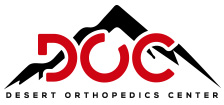PRP (Platelet-Rich Plasma)
Platelet Rich Plasma Treatment (PRP)
Blood consists of a liquid component known as plasma. It also consists of three main solid components which include the red blood cells (RBCs), white blood cells (WBCs), and platelets. Platelets play an important role in forming blood clots. They also consist of special proteins, known as growth factors, which help with our body’s healing process. Platelet-rich plasma or PRP is a high concentration of platelets and plasma. A normal blood specimen contains only 6% platelets, while platelet-rich plasma contains 94% of platelets and 5 to 10 times the concentration of growth factors found in normal blood, thus greater healing properties.
PRP is a relatively new method of treatment for several orthopedic conditions such as muscle, ligament, and tendon injuries; arthritis; and fractures. PRP injections can help alleviate painful symptoms, promote healing, and delay joint replacement surgeries.
There are very minimal risks associated with PRP injections. Some of the potential risks include:
- Increased pain at the injection site
- Infection
- Damage to adjacent nerves or tissues
- Formation of scar tissue
- Calcification at the injection site
General Instructions:
- Stop the following medications before your appointment:
- Do not use any prescription or over the counter anti-inflammatory medicines or NSAIDs such as Aspirin, Motrin, Advil, Ibuprofen, Aleve, Naprosyn, Naproxen, Diclofenac, Meloxicam, Mobic, Celebrex, for two weeks before your appointment
- Your provider will evaluate on a case-by-case basis whether Aspirin, Plavix, Clopidogrel, Xarelto, Brilinta, etc. taken for other issues (cardiac, vascular, etc…) should be stopped or continued before the time of the injection. Notify our office if you are taking any blood thinners or anticoagulant medications
- Infection is very uncommon, but look for fever, chills, increased redness and drainage at the injection or venipuncture site
- It’s normal to feel worse or no better for up to four weeks in the body part being treated
What to Expect:
- After arriving you will be asked a few questions regarding your medical history and do some simple tests such as take your blood pressure
- Your provider will discuss the treatment in detail with you and answer any questions you may have, unless already discussed at your previous visit
- Your blood will be drawn. The blood is then spun in a centrifuge machine to separate the platelets from the remaining blood components
- The injured part of your body is then anesthetized with a topical anesthetic. The platelet-rich portion of your blood is then injected into your affected area
- The procedure takes approximately 30 minutes
After care following PRP Injection:
- You may resume your normal activities but should avoid any strenuous activities such as heavy lifting or exercises
- Ice should be applied to the area of injection for about 20 minutes, 3 times a day for the next 48 hours
- Pain in the injection site is normal and to be expected. Injection site pain is usually worst 2-3 days after the injection
- Start physical therapy as prescribed
- You may use Tylenol (Acetaminophen) as needed for discomfort
- Call the physician if you develop drainage from the injection site, bleeding, or fever
- You may experience some localized swelling and bruising at the injection site that will take 3-7 days to resolve
PLEASE CALL THE OFFICE WITH ANY QUESTIONS OR CONCERNS.






